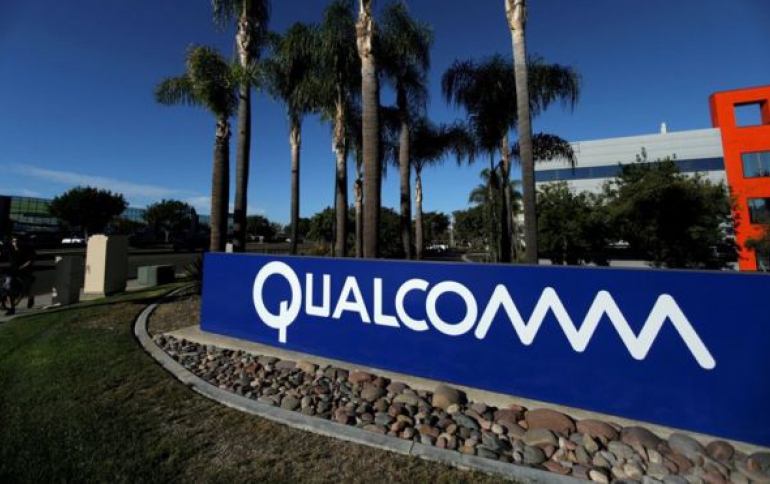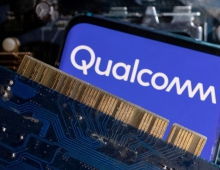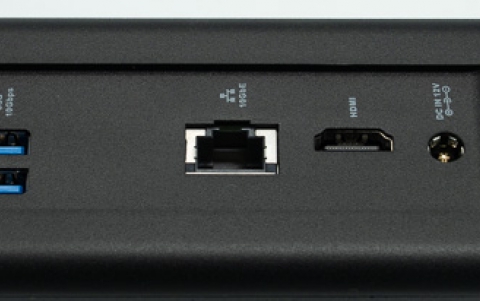
Qualcomm Announces Wireless Edge Services, 2 Gbps LTE Modem, 5G NR Roadmap
Qualcomm held its 5G Day event in San Diego and showed attendees various demonstrations of its new services focused on the Internet of Things, outlined its 5G NR plans, and showcased the Qualcomm Snapdragon X24 LTE modem, the first to support up to 2 gigabits per second (Gbps) download speeds.
New chip software links to cloud services
Qualcomm 's new wireless edge services will be available on select Qualcomm chipsets, initially the MDM9206 LTE modem for industrial IoT, MDM9628 for automotive products, and QCA4020 for home IoT products, with expansion to Snapdragon platforms later.
These services are designed to help enterprise users connect their devices in a secure and trusted manner with the ability for large scale deployment performed efficiently.
Qualcomm will use APIs and keys generated on three IoT chip sets as the basis for its Wireless Edge Services. They will establish secure links to servers run on Qualcomm chips, which can manage a range of capabilities, potentially including every transaction between the node and the cloud. The links can also be used to unlock features of the silicon in what the company calls Chipsets as a Service.
Qualcomm says that the services will let users manage secure software upgrades, respond to cyberattacks, and a range of possibilities yet to be explored.
Some Chinese companies have showed interest in Qualcomm's new edge services. Besides Alibaba and Baidu, they include China's Gizwits, a large provider of IoT cloud services and software; Mobike, a connected-bike rental company in China; and MeiG Smart, an IoT module and terminal maker in Shenzhen.
New LTE IoT SDK
To help OEMs, developers, and other IoT companies create new IoT products, Qualcomm announced an IoT software developer kit for the MDM9206. It lets developers write code on the LTE modem's embedded 1.3-GHz ARM Cortex A7 core. The integrated CPU within the MDM9206 LTE IoT modem also is designed to help eliminate the need for an external microcontroller, which is anticipated to help improve cost-efficiency, battery life and device security.
The SDK will be demonstrated at MWC in a couple of weeks and will be available before June with support for Alibaba's Cloud Link One, China Mobile's OneNet, Gizwits, and Verizon ThingSpace.
The MDM9206 LTE IoT modem is a purpose-built solution designed to support global multimode capabilities, including both eMTC (Cat M1) and NB-IoT (Cat NB-1), as well as 2G/E-GPRS. The MDM9206 LTE IoT modem, along with this new LTE IoT SDK, is designed to facilitate the development of low-power devices designed for multi-year battery life and greater coverage compared to traditional LTE.
X24 LTE modem
Qualcomm' s latest LTE modem - the X24 - will hit max data rates of 2 Gbits/s, putting more space between itself and rivals such as Intel.
The X24 is Qualcomm's first 7-nm chip, presumably made at TSMC. It is paired with a 14-nm RF front-end chip.
The chip supports up to seven carriers with bands as wide as 20 MHz, including up to three channels in unlicensed bands (downlinks). It can support five licensed bands using carrier aggregation and 4x4 MIMO or 2x2 MIMO using unlicensed bands and license-assisted access.
Additional system capacity improvements are made possible through support of Full Dimension Multi-Input Multi-Output (FD-MIMO), a Massive MIMO technology that is foundational to future 5G NR networks.
For uplinks, the X24 delivers up to 316 Mbits/s using three carriers and 256 QAM modulation.
Currently sampled to Qualcomm's customers, the new modem will be in production later this year. The company expects that it will appear in data devices this year and smartphones next year.
Next Phase of 5G NR Technology Roadmap
Qualcomm also showcased several demonstrations that will also be shown at MWC in Barcelona.
Following the recent completion of the first 5G NR standard to accelerate enhanced mobile broadband deployments starting 2019, 3GPP has approved various technology studies that are expected to define the next phase of 5G NR in Release 16 and beyond.
Among the demonstrations, Qualcomm Technologies showcased a live over-the-air demonstration of 5G NR spectrum sharing technologies. The use of 5G spectrum sharing technologies is expected to bring higher levels of mobile broadband performance to unlicensed and shared spectrum, as well as play an important role in extending 5G into new types of deployments such as private networks for industrial IoT. The demonstration showcased advanced spatial domain spectrum sharing technology that relies on Spatial Domain Multiplexing (SDM) and Coordinated Multi-Point (CoMP) concepts. This is designed to deliver higher network capacity and user throughput, through tighter coordination among users of unlicensed and shared spectrum bands. The demonstration utilized the previously announced Qualcomm Technologies 5G NR spectrum sharing prototype system, which is also designed to support testing of 5G NR operation in unlicensed spectrum, both licensed-assisted access (LAA) and standalone operation without a licensed anchor, also known as 5G MulteFire.
Qualcomm also demonstrated wireless industrial ethernet over 5G NR. The ability to free equipment from cables lets the equipment perform more tasks more efficiently.
Private 5G Networks for Industrial IoT are an important area of focus for the next phase of 3GPP 5G NR. The ability to run Industrial Ethernet over a wireless network facilitates reconfigurable factories to increase productivity and flexibility. The demonstration previewed new use cases for 5G NR reliable low latency communication (URLLC) sub-millisecond latency, including the ability to run precise command-and-control for high-demand factory automation applications.
Last but nort least, Qualcomm's 5G NR-based cellular vehicle-to-everything (C-V2X) technology allowed vehicles to communicate over localized connections to provide a safer driving environment.
5G NR-based C-V2X is engineered to augment existing C-V2X technology with complementary capabilities, bringing in high throughput and URLLC capabilities, while maintaining backwards compatibility, which are needed to support advanced use cases for autonomous vehicles, including high throughput sensor and intent sharing, and 3D HD map updates.





















